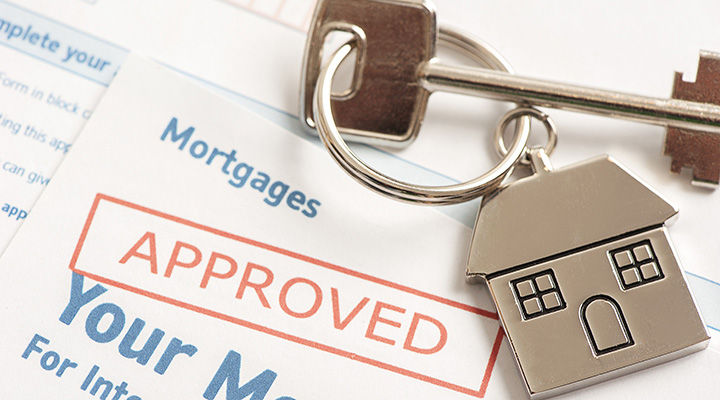Conventional Mortgage Loans: Flexible Funding Solutions for Your Fantasize Home
Conventional Mortgage Loans: Flexible Funding Solutions for Your Fantasize Home
Blog Article
The Vital Variables to Think About When Finding Between Fixed-Rate and Variable-rate Mortgage Finances
When assessing mortgage choices, customers deal with a pivotal choice between fixed-rate and adjustable-rate finances, each providing potential challenges and unique advantages. Secret considerations such as interest price stability, predictability in regular monthly settlements, and the ramifications of potential price modifications can considerably affect long-lasting economic health and wellness.
Rate Of Interest Security
When picking a mortgage, comprehending rate of interest price stability is vital for informed decision-making. Interest rates can considerably impact the general expense of a home mortgage, and identifying the nature of these rates is necessary for consumers.
On the various other hand, variable-rate mortgages (ARMs) begin with reduced first prices that might transform occasionally based on market conditions. While this can result in lower repayments at first, it likewise presents uncertainty, as debtors might encounter boosted payments if rate of interest climb. For those taking into consideration an ARM, it is crucial to analyze the chance of rate modifications, the capacity for payment increases, and the size of the first fixed-rate duration.
Eventually, the option between fixed-rate and adjustable-rate home loans rests on individual risk resistance and economic conditions. Understanding interest price security helps borrowers make informed choices that line up with their long-lasting financial goals.
Regular Monthly Payment Predictability
While consumers usually prioritize rates of interest stability, the predictability of month-to-month settlements is just as essential in the mortgage option procedure (Conventional mortgage loans). Monthly settlement predictability plays a critical duty in budgeting and financial preparation, as it directly influences a house owner's capital and general monetary health
Fixed-rate home mortgages use a consistent month-to-month repayment throughout the life of the car loan, allowing consumers to expect and intend their expenses effectively. This security can be particularly helpful for first-time homebuyers or those on a set earnings, as it removes the uncertainty connected with fluctuating settlements.
Conversely, adjustable-rate home mortgages (ARMs) generally include lower initial repayments that can change with time, leading to possible variability in month-to-month obligations. While initially appealing, this changability can make complex financial preparation, specifically if borrowers do not make up future price adjustments.
Prospective Price Changes
In the world of adjustable-rate home mortgages (ARMs), potential rate changes stand for a significant variable that borrowers should very carefully take into consideration. Unlike fixed-rate mortgages, where the rate of interest stays unmodified for the life of the lending, ARMs are identified by rising and fall rates of interest that are tied to market indices. This variability can cause considerable modifications in regular monthly repayments, influencing the customer's financial planning and budgeting.
Generally, ARMs have an initial fixed-rate period throughout which the rate of interest is steady. After this period, nevertheless, the price changes at established intervals-- commonly each year. Debtors must recognize the margin and index used to calculate these modifications, as they straight influence future rate of interest rates. Additionally, ARMs commonly include caps that limit exactly how much the rate of interest rate can raise at each modification and over the life of the car loan, which can give some level of protection against drastic price walkings.
Understanding these possible adjustments is critical for customers, as they straight affect long-term settlement commitments. Examining individual economic circumstances and run the risk of tolerance is crucial when determining whether an ARM lines up with one's economic objectives.
Lending Term Factors To Consider
Lending term considerations play a pivotal role in the decision-making procedure for debtors selecting in between adjustable-rate and fixed-rate home mortgages. The size of the lending term dramatically impacts regular monthly payments, rate of interest rates, and overall monetary preparation. Fixed-rate mortgages commonly use terms of 15 to thirty years, giving stability in regular monthly settlements and predictability in budgeting. This can be specifically appealing for debtors who plan to remain in the very same home long-lasting and like the certainty of fixed repayments throughout the life of the loan.

Inevitably, customers need to examine their individual scenarios, economic objectives, and market conditions when weighing the implications of finance term choices within each home mortgage kind.

Total Expense of Borrowing
Fixed-rate home mortgages use foreseeable regular monthly settlements, as the rate of interest price continues to be continuous throughout the finance term. This predictability can lead to lower overall costs, particularly in a steady or declining interest rate atmosphere.
Conversely, adjustable-rate mortgages (ARMs) normally begin with reduced first rates, causing decreased upfront costs. However, these rates can enhance after a preliminary duration, causing possibly higher long-lasting prices. Customers should take into consideration the regularity and degree of price changes, along with the total loan duration, to accurately analyze the monetary effects.
Furthermore, the total expense of loaning encompasses not only interest prices but also costs and various other connected expenses, such as shutting prices and insurance (Conventional mortgage loans). Consequently, when reviewing mortgage choices, debtors must perform a additional info detailed price analysis over the life of the car loan. By doing so, they can make an informed decision that straightens with their economic objectives and risk tolerance
Conclusion
Passion price stability and monthly settlement predictability are paramount for effective budgeting, while the capacity for rate modifications in ARMs introduces financial uncertainty. Furthermore, the expected period of homeownership and the total expense of borrowing, consisting of interest rates and linked charges, must line up with specific economic scenarios and run the risk of tolerance.
Key considerations such as navigate to this site passion price stability, predictability in monthly repayments, and the implications of prospective rate modifications can significantly influence lasting monetary health. Interest prices can dramatically influence the total price of a mortgage, and acknowledging the nature of these rates is essential for customers. Unlike fixed-rate home mortgages, where the rate of interest price remains unchanged for the life of the funding, ARMs are identified by changing rate of interest rates that are connected to market indices. Furthermore, ARMs visit their website frequently include caps that limit just how much the passion price can raise at each change and over the life of the lending, which can give some level of security versus extreme rate walkings.
Rate of interest rate security and monthly repayment predictability are paramount for effective budgeting, while the capacity for rate modifications in ARMs introduces financial uncertainty.
Report this page